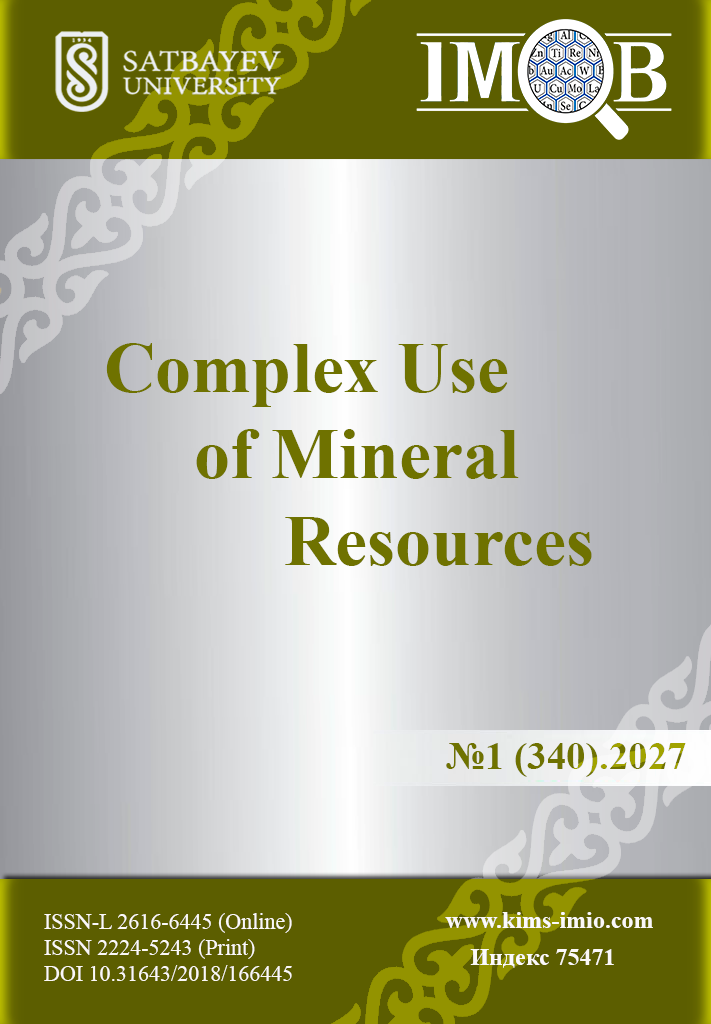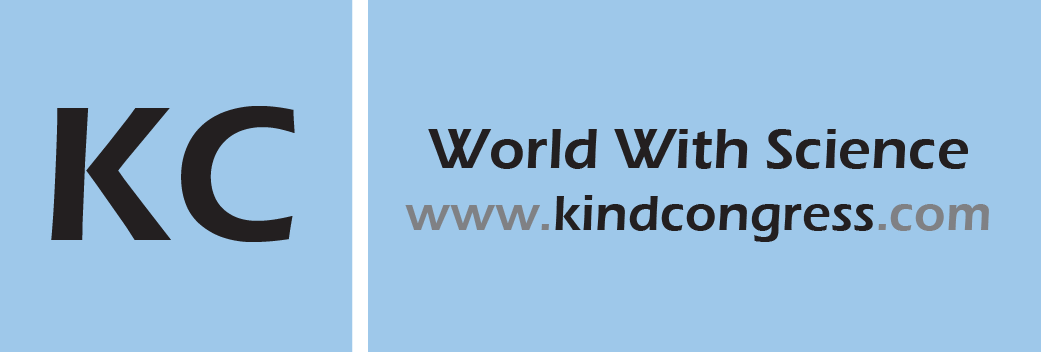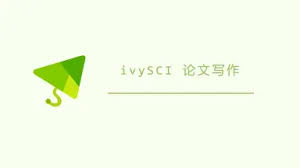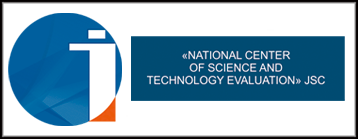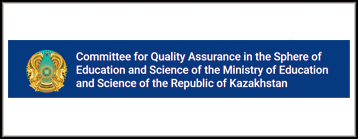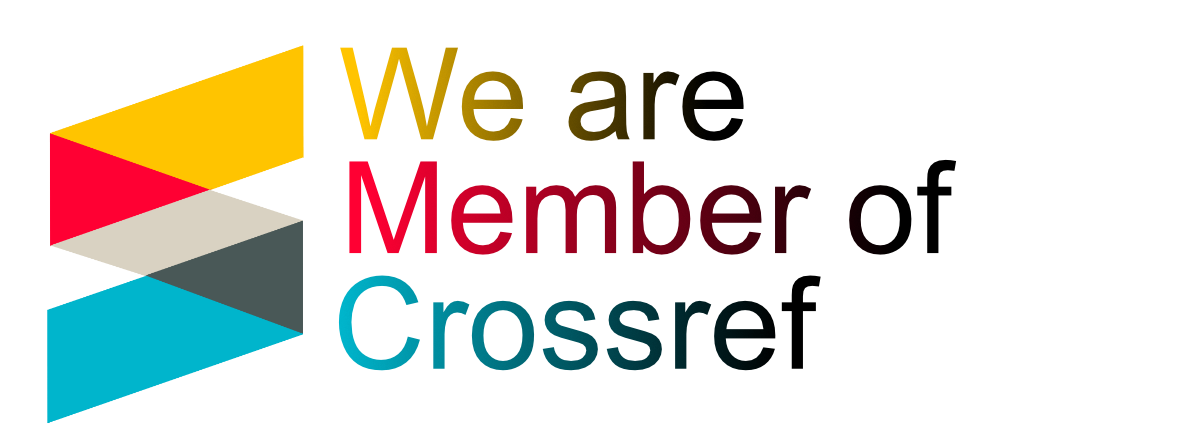Pyrolysis of copper telluride in a water vapour atmosphere
DOI:
https://doi.org/10.31643/2027/6445.11Keywords:
Telllurium, copper, vacuum, water vapour, evaporationAbstract
This paper presents the results of exploratory studies on the feasibility of extracting tellurium from synthetic copper telluride and industrial tellurium–containing middlings using a vacuum-thermal method conducted in a water vapour atmosphere. It was determined that the thermal behavior of synthetic copper telluride follows an oxidation mechanism involving oxygen in a dry environment. The phase transformations occurring in the tellurium–containing industrial middlings are also comparable to those observed during oxidative-distillation roasting and vacuum-thermal processing in an inert atmosphere. The achieved degrees of extraction of copper telluride and tellurium-containing industrial middlings at a temperature of 1100 °C and a pressure of 1.3-2 kPa were 57.83 % and 94.89 %, respectively. The obtained residues are represented by copper oxide phases. At the same time, tellurium evaporates from the material and deposits on the walls of the condenser in the cold part of the reactor at temperatures below 400 °C. According to X-ray phase analysis, the condensate is represented by tellurium in the form of oxide.
Downloads
References
Wang X, Forssberg KSE. The Chemistry of Cyanide-Metal Complexes in Relation to Hydrometallurgical Processes of Precious Metals. Mineral Processing and Extractive Metallurgy Review. 1990; 6(1–4):81–125. https://doi.org/10.1080/08827509008952658
Haque KE. Gold Leaching from Refractory Ores—Literature Survey. Mineral Processing and Extractive Metallurgy Review. 1987; 2(3):235–253. https://doi.org/10.1080/08827508708952607
Chibesa M, Nakhaei F, Alagha L. Surface Chemistry and Activation of Pyrite in Flotation: Enhancing Critical Minerals Recovery. Mineral Processing and Extractive Metallurgy Review. 2025; 1–23. https://doi.org/10.1080/08827508.2025.2518970
Koizhanova A, Kenzhaliyev B, Magomedov D, Erdenova M, Bakrayeva A, Abdyldaev N. Hydrometallurgical studies on the leaching of copper from man-made mineral formations. Kompleksnoe Ispolzovanie Mineralnogo Syra = Complex Use of Mineral Resources. 2024; 330(3):32–42. https://doi.org/10.31643/2024/6445.26
Chen A, Peng Z, Hwang J-Y, Ma Y, Liu X, Chen X. Recovery of Silver and Gold from Copper Anode Slimes. JOM. 2015; 2:493–502. https://doi.org/10.1007/s11837-014-1114-9
Mahmoudi A, Shakibania S, Mokmeli M, Rashchi F. Tellurium, from copper anode slime to high purity product: A review paper. Metallurgical and Materials Transactions B. 2020; 51:2555–2575. https://doi.org/10.1007/s11663-020-01974-x
Liu G, Wu Yu, Tang A, Pan D, Li B. Recovery of scattered and precious metals from copper anode slime by hydrometallurgy: A review. Hydrometallurgy. 2020; 197:105460. https://doi.org/10.1016/j.hydromet.2020.105460
Mastyugin SA, Naboichenko SS. Processing of copper-electrolyte slimes: Evolution of technology. Russian Journal of Non-Ferrous Metals. 2012; 53:367–374. https://doi.org/10.3103/S1067821212050070
Xing WD, Lee MS. Leaching of gold and silver from anode slime with a mixture of hydrochloric acid and oxidizing agents. Geosystem Engineering. 2017; 20(4):216–223. https://doi.org/10.1080/12269328.2017.1278728
Xiao L, Wang YL, Yu Y, Fu GY, Han PW, Sun ZHI, Ye SF. An environmentally friendly process to selectively recover silver from copper anode slime. Journal of Cleaner Production. 2018; 187:708–716. https://doi.org/10.1016/j.jclepro.2018.03.203
Ding Y, Zhang S, Liu B, Li B. Integrated process for recycling copper anode slime from electronic waste smelting. Journal of Cleaner Production. 2017; 165:48–56. https://doi.org/10.1016/j.jclepro.2017.07.094
Kenzhaliyev BK, Trebukhov SA, Volodin VN, Trebukhov AA, Tuleutay FKh. Selenium extraction out of metallurgical production middlings. Kompleksnoe Ispolzovanie Mineralnogo Syra = Complex Use of Mineral Resources. 2018; 307(4):56–64. https://doi.org/10.31643/2018/6445.30
Kenzhaliyev BK, Trebukhov SA, Nitsenko AV, Burabayeva NM, Trebukhov AA. Determination of technological parameters of selenium recovery from metallurgical production middlings in a vacuum distillation unit. International Journal of Mechanical and Production Engineering Research and Development. 2019; 9(6):87–98.
Shibasaki T, Abe K, Takeuchi H. Recovery of tellurium from decopperizing leach solution of copper refinery slimes by a fixed bed reactor. Hydrometallurgy. 1992; 29:399–412. https://doi.org/10.1016/0304-386X(92)90024-T
Nitsenko AV, Burabaeva NM, Tuleytay FK, Seisembaev RS, Linnik XA, Azlan MN. Study of physical and chemical properties of tellurium-containing middlings. Kompleksnoe Ispolzovanie Mineralnogo Syra = Complex Use of Mineral Resources. 2020; 315(4):49–56. https://doi.org/10.31643/2020/6445.36
Xu L, Xiong Y, Song Y, Zhang G, Zhang F, Yang Y, Hua Z, Tian Y, You J, Zhao Z. Recycling of copper telluride from copper anode slime processing: Toward efficient recovery of tellurium and copper. Hydrometallurgy. 2020; 196:105436. https://doi.org/10.1016/j.hydromet.2020.105436
Nitsenko AV, Linnik KA, Tuleutay FH, Burabayeva NM, Seisembayev RС. Fiziko-himicheskaya harakteristika tellursoderzhashchego promprodukta TOO «Kazahmys Smelting» [Physical and chemical characterization of tellurium-containing industrial product of Kazakhmys Smelting LLP]. Teoriya i tekhnologiya metallurgicheskogo proizvodstva = Theory and technology of metallurgical production. 2021; 3:10–16
Zhang H, Li Z, Yang Y, Zha G, Xu B, Liu D, Yang B, Jiang W. Advances in tellurium recovery and purification: A comprehensive review of separation methods and emerging technologies. Resources, Conservation and Recycling. 2025; 215:108160. https://doi.org/10.1016/j.resconrec.2025.108160
Xu L, Xiong Y, Zhang G, Zhang F, Yang Y, Hua Z, Tian Y, You J, Zhao Z. An environmental-friendly process for recovery of tellurium and copper from copper telluride. Journal of Cleaner Production. 2020; 272:122723. https://doi.org/10.1016/j.jclepro.2020.122723
Weissburd SE. Fiziko-himicheskie svojstva i osobennosti stroeniya sul'fidnyh rasplavov [Physical and chemical properties and structure peculiarities of sulfide melts]. Metallurgy: Moscow, Russia, 1996. (in Russ.).
Dutchak YaI, Korenchuk NM, Korenchuk SV. Issledovanie davleniya para i termodinamicheskiy analiz splavov sistemy Cu2S–Cu2Te [Study of vapor pressure and thermodynamic analysis of alloys of the system Cu2S–Cu2Te]. Izvestiya AN SSSR. Neorganicheskie materialy = Proceedings of the Academy of Sciences of the USSR. Inorg. Materials. 1975; 11(2):201–203. (in Russ.).
Li Zh, Deng J, Liu D, Jiang W, Zha G, Huang D, Deng P, Li B. Waste-free separation and recovery of copper telluride slag by directional sulfidation-vacuum distillation. Journal of Cleaner Production. 2022; 335:130356. https://doi.org/10.1016/j.jclepro.2022.130356
Nitsenko AV, Volodin VN, Linnik XA, Tuleutay FKh, Burabaeva NM. Distillation recovery of tellurium from copper telluride in oxide form. Russian Journal of Non-Ferrous Metals. 2022; 63(3):284–291. https://doi.org/10.3103/S1067821222030105
Nitsenko AV, Linnik XА, Volodin VN, Trebukhov SА, Tuleutay F. Behavior of Technical Copper Telluride During Vacuum Thermal Treatment. Mineral Processing and Extractive Metallurgy Review. 2025; 1–16. https://doi.org/10.1080/08827508.2025.2555366
Plyushchev VE, Stepina SB, Fedorov PI. Khimiya i tekhnologiya redkikh i rasseyannykh elementov [Chemistry and technology of rare and scattered elements]: textbook for universities. Edited by K.A. Bolshakov. Мoscow: graduate School. 1976; 3:320. (in Russ.).
Chizhikov DM, Shchastlivyi VP. Tellur i telluridy [Tellurium and Tellurides]. Collet’s Publishers Ltd.: London. 1970. (in Russ.).
Zhu X, Wang Zh, Su X, Vilarinho PM. New Cu3TeO6 ceramics: phase formation and dielectric properties. ACS Applied Materials and Interfaces. 2014; 6:11326–11332. https://doi.org/10.1021/am501742z
Konings RJM, Cordfunke EHP, Smit-Groen V. The vapour pressures of hydroxides II. TeO(OH)2 The Journal of Chemical Thermodynamics. 1990; 22(8):751-756. https://doi.org/10.1016/0021-9614(90)90066-Y
Malinauskas AP, Gooch Jr JW, Redman JD. The Interaction of Tellurium Dioxide and Water Vapor. Nuclear Applications and Technology. 1970; 8(1):52–57. https://doi.org/10.13182/NT70-A28633
A Chemical Perspective on the Tellurium Source Term in the Context of Severe Nuclear Power Plant Accidents, Department of Chemistry and Chemical Engineering, Chalmers University Of Technology, Gothenburg, Sweden. 2020. https://research.chalmers.se/publication/518849/file/518849_Fulltext.pdf (accessed on 12 May 2025)
Qiu Y, Ye J, Liu Y, Yang X. Facile rapid synthesis of a nanocrystalline Cu2Te multi-phase transition material and its thermoelectric performance. RSC advances. 2017; 7:22558–22566. https://doi.org/10.1039/C7RA02145C
He Y, Zhang T, Shi X, Wei S-H, Chen L. High thermoelectric performance in copper telluride. NPG Asia materials. 2015; 7:1-7. https://doi.org/10.1038/am.2015.91
Nitsenko AV, Linnik XA, Volodin VN, Tuleutay FKh, Bakhytuly N. Pyrolysis of synthetic copper telluride in an inert atmosphere. Kompleksnoe Ispolzovanie Mineralnogo Syra = Complex Use of Mineral Resources. 2025; 335(4):67-77. https://doi.org/10.31643/2025/6445.41
Kukleva TV, Fedorova TB, Vishnyakov AV, Kovtunenko PV. Features of low-temperature oxidation of copper(i) telluride. Inorganic Materials. 1988; 24:1469–1471.
Nitsenko A, Linnik X, Volodin V, Tuleutay F, Burabaeva N, Trebukhov S, Ruzakhunova G. Phase Transformations and Tellurium Recovery from Technical Copper Telluride by Oxidative-Distillate Roasting at 0.67 kPa. Metals. 2022; 12:1774. https://doi.org/10.3390/met12101774
Downloads
Published
How to Cite
Issue
Section
License
Copyright (c) 2025 A.V. Nitsenko, X.A. Linnik, V.N. Volodin, N.M. Burabayeva, S.A. Trebukhov

This work is licensed under a Creative Commons Attribution 4.0 International License.

